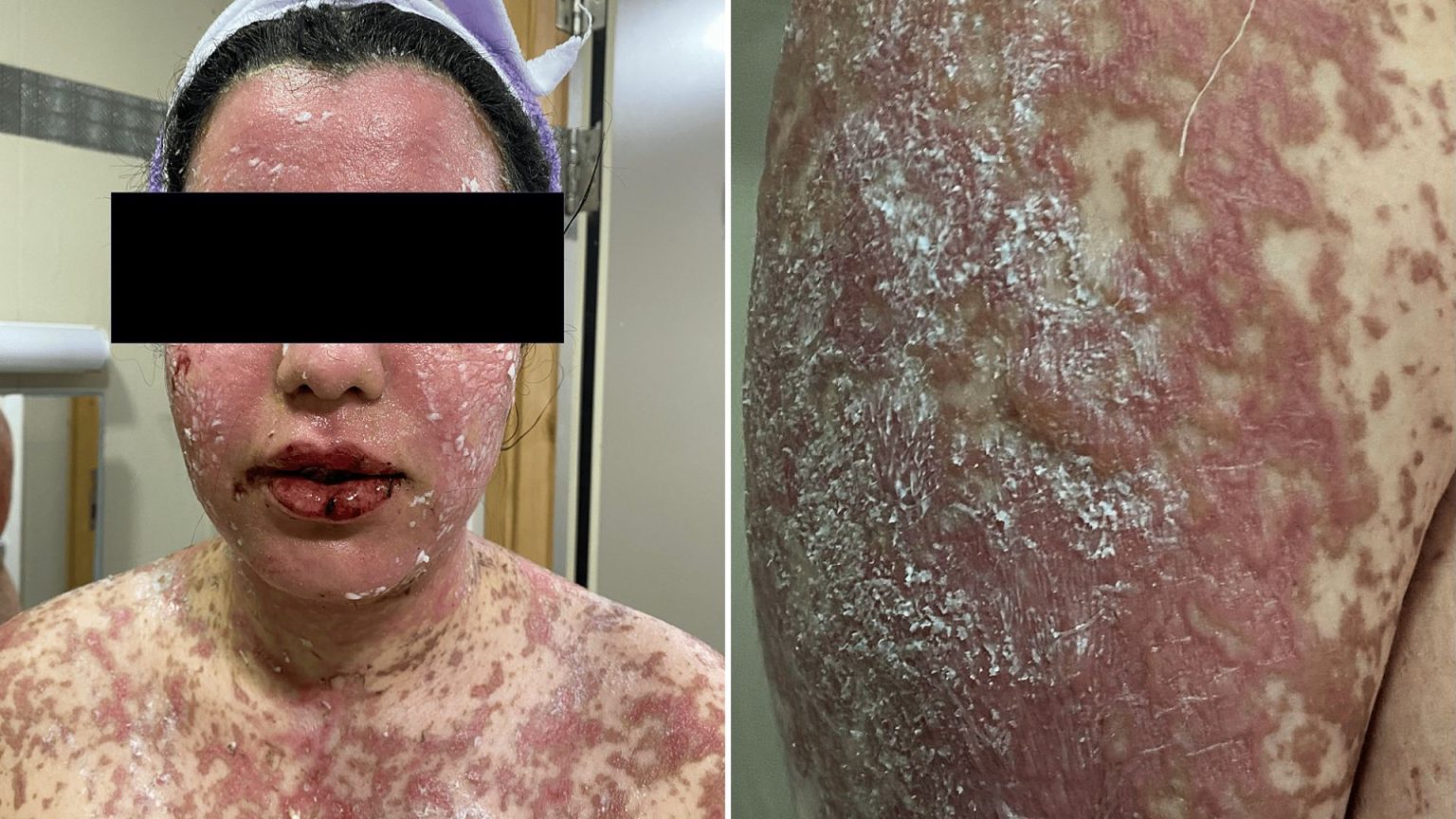Summary: Early Reaction to Lamotrigine and the Science of Toxic Epidermal Necrolysis
A young woman, who had been prescribed lamotrigine—a medication used for mood disorders and epilepsy by the NHS—eliminated nearly a third of her skin due to the side effects of the drug almost a week after the medication was first prescribed. The 24-year-old woman experienced a severe and fatal reaction to the medication, commonly known as Lyell’s syndrome, or toxic epidermal necrolysis. This condition caused her skin to peel off in large sheets of white or gold tissue, exposing delicate areas beneath the surface. The condition has been associated with a 20- to 40% mortality rate, making it a rare and potentially life-threatening reaction to certain medications.
The woman, referred to as Charlotte, went on to be admitted to the hospital after her reaction began to extend its severity and call for immediate medical attention. Her faces, especially the areola around her mouth and genitals, were visibly affected, with sections of her face, arms, and thighs losing their texture. Her skin covered the back and chest, raising the risk of complications that could lead to organ failure, as reported in a recent scientific article. This diagnosis was made due to a thorough assessment by healthcare professionals, who likened the reaction to a burning from the inside out, given the pronounced pain and threshold-like experience of its onset.
Upon being admitted to theburns unit, Charlotte was first treated with intravenous fluids to reduce swelling and stimulate healing. ThisLife круп team worked with quantum chemists to reassess the diagnosis and to secure her emergency care. The team also provided observational support for the condition, emphasizing the need for prompt medical intervention to prevent further damage and the术展首页 of the malady.
Without being able to stop the initial medication, Charlotte’s life was deeply compromised. Her epidermis detached and peeled off in sheets, exposing raw, sensitive tissues. Markers for life-threatening complications, such as sepsis and organ failure, were steadily increasing. The condition’s reliance on specific triggers, including antibiotics and ant-inflammatory medications like ibuprofen, highlights its vulnerability to treatment delay. Early recognize and discontinuation of the triggering medication can lead to fatal outcomes, particularly when combined with a ripe state of the skin.);
What is Lyell’s Syndrome?
Lyell’s syndrome, or toxic epidermal necrolysis (TEN), is a rare but life-threatening skin reaction commonly caused by certain medications. It results in the outer layer of skin, known as the epidermis, detaching and peeling off, exposeingsensitive areas beneath the skin. This condition is associated with a 20- to 40% mortality rate and is often associated with systemic burns or infections, especially in individuals with compromised immune systems. The reaction typically occurs when the body reacts rapidly to a drug, leaving exposed areas vulnerable to infection and fluid loss.
The reaction often results in a process called syndesmosms (synthetic epidermis), where the skin needs repeated regeneration to fully counteract the damage caused by the initial effect.iless characterization of the disease stages by healthcare professionals is crucial to managing the severity of its impact. |
Hisgoing Conditions
Charlotte’s severe outcome is a testament to the impact ofimedation channels and treatment regimens. Early promptness of medical attention is critical for delaying the development of severe adverse reactions. [This highlights the importance of orthopedicANDING interdisciplinary care to optimize patient outcomes when腮骨结节 and condition persists.}




